Aluminium is een van de populairste metalen ter wereld. Het staat erom bekend lichtgewicht te zijn, een hoge sterkte-gewichtsverhouding te hebben en corrosiebestendig te zijn. Een van de belangrijkste eigenschappen van aluminium die echter discutabel is, is dat het elektriciteit geleidt. Hoe beantwoord je daarom de vraag: Is aluminium een elektrische geleider? Hier komen we bij het antwoord: ja, aluminium kan elektriciteit geleiden, maar niet zo goed als koper, het metaal bij uitstek bij het maken van een elektrisch systeem.
Dit artikel bespreekt de elektrische geleidbaarheid van aluminium, het gebruik ervan in de elektrische industrie en de voordelen en beperkingen van het gebruik ervan in de elektrische industrie.
Wat betekent elektrische geleidbaarheid?
We zullen eerst kijken wat elektrische geleiding is voordat we zeggen of aluminium een elektrische geleider is of niet. Het vermogen van een materiaal om elektrische stroom toe te laten wordt elektrische geleidbaarheid genoemd. Dit hangt af van het aantal vrij bewegende elektronen in dat materiaal. Metalen hebben over het algemeen zeer vrije elektronen die gemakkelijk kunnen stromen binnen hun atomaire structuur, waardoor ze goede geleiders zijn.
De meeteenheid van de elektrische geleidbaarheid van een bepaald materiaal is merkbaar in siemens gedeeld door meter (S/m). Hoe groter de weerstand, hoe minder elektriciteit er doorheen kan. Goed geleidende materialen zoals koper en aluminium worden gebruikt in verschillende elektrische toepassingen zoals stroomvoorziening, stroomtransmissie, bedrading en circuits.
Geleidt aluminium elektriciteit?
Ja, aluminium is vele malen beter geleidend dan koper. Aluminium wordt beschouwd als een goede geleider als we kijken naar de geleidbaarheid van metalen, hoewel de elektrische geleidbaarheid slechts ongeveer 61 procent van die van koper is. Dit betekent dat koper een grotere stroom door een gegeven draadgrootte zal laten lopen.
Desondanks maakt het feit dat aluminium een relatief hoog geleidingsvermogen heeft het toepasbaar in de meeste elektrische toepassingen, vooral waar gewicht en kosten kritische overwegingen zijn. De weerstand van aluminium is niet zo hoog als die van veel andere materialen; dat wil zeggen dat aluminium ook elektriciteit kan geleiden, maar met relatief minder weerstand.
Hoe werkt aluminium met elektriciteit?
Elektriciteit wordt geleid in een aluminium door de stroom van vrije elektronen door de structuur van de atomen. Deze vrije elektronen zijn slechts zwak verbonden met de atomen van het metaal en kunnen gemakkelijk bewegen zodra er een elektrisch veld aanwezig is. Als het materiaal de elektronen doorlaat, ontstaat er een elektrische stroom.
Aluminium heeft ook een vrij hoog aantal vrije elektronen, wat betekent dat het ook een goede geleider van elektriciteit is, maar niet zo efficiënt als koper. Het is ongeveer 61 keer minder elektrisch geleidend dan koper, dus het is iets beter bestand tegen de stroom van elektronen.
De geleidbaarheid van aluminium neemt ook af bij een temperatuurstijging door de verhoogde trilling van atomen in het metaal, waardoor de weerstand toeneemt. Bovendien ontwikkelt zich een niet-geleidende oxidelaag op het oppervlak van aluminium, waardoor de geleidbaarheid afneemt op plaatsen waar verbindingen worden gemaakt. Deze gevormde oxidelaag moet onder controle worden gehouden, omdat het een goede geleiding zou belemmeren, vooral bij elektrische contacten.
Elektrisch geleidende aluminiumsoorten
Aluminium is een elektrische geleider en de mate van geleidbaarheid hangt ook af van de kwaliteit, omdat verschillende kwaliteiten verschillende zuiverheden en legeringsmetalen bevatten. De correlatie tussen de soort aluminium en de geleidbaarheid is essentieel bij het kiezen van het juiste type aluminium voor bepaalde elektrische toepassingen.
1. Zuiver aluminium ( 1100 Grd )
Aluminiumkwaliteit 1100 kan worden beschouwd als een van de zuiverste aluminiumsoorten met een zuiverheidsgraad van 99 procent en meer. Deze zuiverheid is hoog, wat leidt tot een goede elektrische geleidbaarheid, zodat het goed zou zijn in gebieden die elektrische geleidbaarheid en prestaties het beste vereisen, zoals bedrading en aansluitingen op elektriciteit.
- Elektrische geleidbaarheid: Ongeveer 61 procent van dat van koper.
- Toepassingen: Het wordt gebruikt in stroomkabelsystemen, elektrische geleiders en andere apparaten waar een hoog geleidingsvermogen en een lage weerstand essentieel zijn.
2. Aluminiumlegering 1350
Aluminiumlegering 1350 is nog zo'n hoogzuiver aluminium, alleen wordt het gecombineerd met minieme hoeveelheden koper om de sterkte en andere eigenschappen te verbeteren. Deze kwaliteit is geleidend op een lager niveau dan 1100-kwaliteit aluminium, maar levert ook goede prestaties in elektrische functies.
- Elektrische geleidbaarheid: Ongeveer 61 procent van het geleidingsvermogen van koper, dat lijkt op aluminium van graad 1100.
- Toepassingen: Het wordt veel gebruikt in draden, geleiders en transformatoren, vooral in elektrische systemen met een hoog voltage.
3. 6063 aluminiumlegering
Aluminium kwaliteit 6063 is een middelsterke legering en wordt normaal gesproken gebruikt voor structurele doeleinden zoals extrusies en frames. Het heeft meer legeringsmaterialen zoals magnesium en silicium, die bijdragen aan de mechanische sterkte, waardoor het elektrisch minder geleidend is dan 1100 en 1350 aluminium.
- Elektrische geleidbaarheid: Het geleidingsvermogen van koper is 50-55 procent lager, met bijkomende legeringseffecten van de elementen.
- Toepassingen: Het wordt voornamelijk toegepast in architecturale extrusies, raamkozijnen en onderdelen voor de ruimtevaart. Hoewel het niet zo geleidend is als de zuiverdere soorten, wordt het soms gebruikt in gebieden waar sterkte en vervormbaarheid belangrijker zijn dan geleidbaarheid.
4. Aluminiumlegering 1050
Aluminiumlegering 1050 is ook aluminium met een hoge zuiverheidsgraad, maar met een lichte aanwezigheid van ijzer; daarom is het geleidingsvermogen minder dan dat van aluminium met de 1100-kwaliteit. Het is echter goed in zijn elektrische geleidbaarheid voor verschillende toepassingen.
- Elektrische geleidbaarheid: De elektrische geleidbaarheid is 99,76 % van die van koper, het equivalent van 1100-kwaliteit.
- Toepassingen: Elektrische kabels, draden en batterijconnectoren waarbij een hoog geleidingsvermogen de factor is, maar waarbij de vermelde mechanische sterkte geen groot probleem is.
5. Aloy 6061 aluminium
Wat deze aluminiumlegering van 6061-kwaliteit populair maakt, zijn de goede mechanische eigenschappen en veelzijdigheid. Om het sterk te maken is het gelegeerd met magnesium en silicium, waardoor het een matig verlies aan geleidbaarheid heeft.
-Elektrisch geleidingsvermogen: ongeveer 45-50 procent van het geleidingsvermogen van koper.
Toepassing: Wordt vaak gebruikt in constructiedelen, auto-onderdelen en apparatuur die op volle zee wordt gebruikt, waar elektrische geleiding niet van groot belang is, maar sterkte en corrosiebestendigheid wel.
Wordt de elektrische geleidbaarheid beïnvloed door het afwerken van aluminium?
De elektrische geleidbaarheid van aluminium kan sterk worden beïnvloed door de afwerking van aluminium en dit wordt bepaald door de afwerking die men op het metaal aanbrengt. De geleidende eigenschap van aluminium kan worden veranderd door verschillende oppervlaktebehandelingen: oxidelaagvorming, anodiseren, coaten, polijsten, enz.
1. Vorming van oxidelaag
In aanwezigheid van lucht, zoals door het oxidatieproces, vormt aluminium een dunne laag oxiden (Al 2 O 3 ). Hoewel deze oxidelaag bescherming biedt tegen corrosie, is hij niet geleidend. Dit betekent dat deze oxidelaag op de plaats waar de elektriciteit wordt aangesloten de weerstand kan verhogen, waardoor de totale geleidbaarheid van aluminium in gevaar komt. De efficiëntie van elektrische activiteiten bij hoge prestaties kan verloren gaan door het bestaan van deze oxidelaag. Om een goede geleidbaarheid te bereiken, moet zo'n oxidelaag geëlimineerd of beperkt worden op contactplaatsen, of er worden oppervlaktebehandelingen geleverd om afzetting van oxide te voorkomen.
2. Anodiseren
Bij aluminium is anodiseren een proces om de oxidelaag opzettelijk dikker te maken. Hoewel het de corrosiebestendigheid verhoogt en de esthetische afwerking van het oppervlak verbetert, zorgt anodiseren er ook voor dat het oppervlak beter isoleert. Dit vermindert de geleidbaarheid van het aluminium aanzienlijk, waardoor het ongeschikt is voor toepassingen waarbij elektrische stroom wordt gebruikt. Maar bij bepaalde toepassingen, zoals toepassingen met esthetisch belang, wordt de anodiseerhuid niet verwijderd vanwege de beschermende werking. Anodiseren kan niet optimaal zijn in de geleidende toepassingen, tenzij een doelgerichte verwijdering van de oxidelaag gepland is op de verbindingspunten.
3. Coatings en verven
Aluminium wordt gecoat en geverfd om het extra te beschermen tegen omgevingselementen en het uiterlijk te verbeteren. De meeste coatings (vooral gewone verf) zijn echter isolerend en vormen barrières voor de elektrische geleiding. Coatings hebben het effect dat de elektrische geleiding van het metaal met een grote marge afneemt in gevallen waarin de coating wordt aangebracht. In het geval van aluminium in elektrische systemen moet eraan worden gedacht dat de onderdelen waarmee elektrisch contact wordt gemaakt niet mogen worden gecoat, of in speciale gevallen kan het wenselijk zijn om geleidende coating te gebruiken in bepaalde situaties.
4. Oppervlakte polijsten
Een van de afwerkingsmethoden die wordt gebruikt is oppervlaktepolijsten om een schoon en glad oppervlak van aluminium te krijgen. Mechanisch gezien is polijsten in het geval van elektrische geleiding het proces dat de eigenschap in termen van elektrische geleiding verbetert om een schoner contactoppervlak te bieden. Een gepolijst aluminium oppervlak maakt een grotere efficiëntie van de elektrische verbinding mogelijk, verlaagt de weerstand en verbetert de prestaties van elektrische systemen. Maar als het polijsten te veel wordt gedaan, kan dit leiden tot materiaalverlies, wat een probleem kan zijn voor de integriteit en grootte van het aluminium in sommige toepassingen. Bijgevolg moet polijsten alleen gebruikt worden om de gewenste balans tussen geleidbaarheid en sterkte van het materiaal te bereiken.
Waarom wordt aluminium gebruikt in elektriciteit?
Hoewel koper elektrisch geleidend is in vergelijking met aluminium, heeft dit de elektrische industrie er niet van weerhouden om aluminium te gebruiken. De oorzaken hiervan zijn:
1. Kosteneffectiviteit
Een goedkopere prijs is een van de belangrijkste voordelen van de toepassing van aluminium in elektronica. In tegenstelling tot koper is aluminium goedkoper; in feite is de prijs ongeveer een derde van de kosten van koper. Deze betaalbaarheidsfactor maakt aluminium een geweldige optie als het gaat om grootschalige elektrische installaties, omdat er een grote hoeveelheid materiaal nodig is.
2. Lichtgewicht
Aluminium is ook erg licht vergeleken met koper en de dichtheid is ongeveer een derde van die van koper. Dit maakt het geschikt voor toepassingen waar gewicht een rol speelt, zoals in bovengrondse hoogspanningsleidingen. De transportkosten zijn lager door het lichte gewicht van aluminium en de installatie is eenvoudig.
3. Corrosiebestendigheid
In de open lucht ontwikkelt aluminium ook op natuurlijke wijze een dunne beschermende oxidelaag die het oppervlak bedekt. Deze oxidelaag dient als een verzegeling die niet verder kan oxideren en daardoor is aluminium een extreem corrosiebestendig materiaal. Dit is een voordeel, vooral voor elektrische systemen die buiten staan, omdat weersfactoren en vochtigheid gemakkelijk andere metalen zoals koper kunnen aantasten.
4. Verhouding sterkte/gewicht
Aluminium heeft een grote sterkte-gewichtsverhouding, wat betekent dat het, hoewel het licht van gewicht is, een grote structurele sterkte kan bieden. Dit aspect maakt aluminium een prachtige optie voor bijna alle elektrische toepassingen, zoals kabels, transmissielijnen en zelfs bij de constructie van elektrische apparatuur.
Sterkte van aluminium en koper vergeleken: Elektrische geleidbaarheid
Zoals hierboven vermeld, is de elektrische coDe geleidbaarheid van aluminium is ongeveer 61 procent van die van koper. Toch is het verschil in geleidbaarheid niet zo groot als het lijkt. In het geval van veel grootschalige toepassingen, zoals stroomtransmissie, compenseren de besparingen in kosten en gewicht die aluminium oplevert de iets lagere geleidbaarheid. Dit gezegd hebbende, als het aankomt op hoge elektrische prestaties dan is koper nog steeds de betere geleider.
Een vergelijking tussen aluminium en koper:
| Eigendom | Aluminium | Koper |
| Geleidbaarheid | 61% van koper | 100% (meest geleidende metaal) |
| Dichtheid | 2,70 g/cm³ | 8,96 g/cm³ |
| Smeltpunt | 660°C | 1,084°C |
| Corrosiebestendigheid | Hoog (vormt oxidelaag) | Matig (bescherming nodig) |
| Kosten | Onder | Hoger |
| Verhouding sterkte/gewicht | Hoog | Matig |
Hoewel koper beter geleidt, wordt het verschil in prestatie normaal gesproken verklaard door een aluminium kabel met een grotere doorsnede te gebruiken om dezelfde hoeveelheid elektriciteit te vervoeren in een koperen kabel met een kleinere doorsnede. Dat is de reden waarom bovengrondse elektriciteitstransmissiekabels en andere grootschalige elektrische installaties meestal aluminium kabels gebruiken.
De vergelijking van aluminium met andere geleiders
Als we aluminium vergelijken met andere elektrische geleiders zoals koper en zilver, dan zijn de prestaties vaak bevredigend, maar niet goed bruikbaar in een hoogwaardig systeem.
| Eigendom | Aluminium | Koper | Zilver |
| Geleidbaarheid | 61% van koper | 100% (beste geleider) | 106% (beste voor geleidbaarheid) |
| Dichtheid | 2,70 g/cm³ | 8,96 g/cm³ | 10,49 g/cm³ |
| Corrosiebestendigheid | Hoog | Matig | Laag |
| Kosten | Laag | Hoog | Zeer hoog |
| Verhouding sterkte/gewicht | Hoog | Matig | Matig |
Toepassingen van aluminium in elektriciteit
Aluminium wordt toegepast in zeer uiteenlopende elektrische producten, vooral daar waar de genoemde eigenschappen voordelig zijn: lage kosten, lage dichtheid en corrosiebestendigheid.
1. Elektriciteitstransmissielijnen
De meest voorkomende toepassing van aluminium is in bovengrondse hoogspanningsleidingen, waarbij het lage gewicht en de hoge geleidingswaarde het geschikt maken voor elektriciteitstransmissie over lange afstanden. Aluminium elektriciteitsleidingen zijn goedkoper te leggen en te onderhouden dan koperen leidingen en door hun lage gewicht zijn ze gemakkelijk te installeren.
2. Elektrische bedrading / Kabels
Aluminium bedrading wordt vaak gebruikt in de woning- en utiliteitsbouw, met name in circuits met een lage of gemiddelde elektrische belasting. Koperdraad kan nog steeds worden gebruikt in circuits met hoge prestaties, maar aluminium kan worden toegepast in grote installaties waar kosten en gewicht een belangrijke rol spelen.
3. Aardingsdraden
Aardingsdraden zijn ook gemaakt van aluminium, omdat er een veilig pad moet zijn waarlangs de elektrische stroom kan stromen in het geval van een storing. Aarding speelt een fundamentele rol bij het veilig afvoeren van overmatige elektrische stroom naar de grond, zodat er geen apparatuur beschadigd raakt en de kans op elektrische branden geminimaliseerd wordt.
4. Elektrische motoren en apparaten
Elektromotoren en transformatoren hebben aluminium als wikkelmateriaal. Het metaal is licht van gewicht, relatief sterk en heeft een goed geleidingsvermogen, waardoor het een zeer goede optie is om toe te passen in een grote verscheidenheid aan industriële en commerciële toepassingen.
Problemen en oplossingen voor problemen met aluminiumgeleiding
Hoewel aluminium een geschikte geleider is, heeft het ook bepaalde problemen die moeten worden opgelost wanneer het wordt gebruikt als geleider in een elektrisch systeem.
1. Hogere weerstand
Het grootste nadeel van aluminium is dat het elektrisch geleidender is dan koper. Dit houdt in dat, wanneer er evenveel stroom vloeit, er meer warmte en een spanningsdaling in de aluminiumdraad optreedt. Dit maakt het in sommige gevallen noodzakelijk om grotere aluminium geleiders te gebruiken om dezelfde prestaties te leveren als koperdraden.
2. Verbindings- en oxidatieproblemen
Aluminium wordt gemakkelijk geoxideerd, vooral de verbindingen. Aan de ene kant is aluminium, wanneer het bedekt is met een oxidelaag, corrosiebestendig; aan de andere kant kan de oxidelaag zich als een elektrische isolator opstellen, waardoor een hogere weerstand ontstaat en de verbindingen geïsoleerd raken. Dit kan oververhitting, storingen en in het ergste geval elektrische uitval veroorzaken. In een poging dit te voorkomen, moet tijdens de installatie speciale aandacht worden gevraagd zodat de juiste verbindingen worden gemaakt en er geen corrosie kan optreden bij de verbindingen.
3. Mechanische sterkte
Hoewel aluminium een uitstekende verhouding sterkte/massa heeft, is het nog steeds minder robuust dan koper en kan het gevoelig zijn voor mechanische schade, vooral bij hoge spanning en trillingen. In toepassingen met hoge belasting worden de aluminium draden meestal versterkt met staal of andere materialen.
Conclusie
Er kan echter worden geconcludeerd dat aluminium inderdaad elektriciteit geleidt, maar het is ook een veelgebruikt materiaal in de elektrische industrie vanwege de goede geleidbaarheid, de economische voordelen, het feit dat het licht van gewicht is en de weerstand tegen corrosie. Hoewel het niet zo geleidend is als koper, is het goedkoop genoeg en heeft het andere gunstige eigenschappen, waardoor het kan worden gebruikt als alternatief voor koper in de meeste elektrische toepassingen.
Aluminium is vooral praktisch bij grootschalige projecten zoals stroomtransmissie en elektrische bedrading, waar de prijs- en gewichtsvoordelen zwaarder wegen dan de neiging tot lagere geleidbaarheid. De uitdagingen waar ingenieurs en elektriciens rekening mee moeten houden bij het ontwerpen en aanleggen van elektrische systemen op basis van aluminium, zijn echter de verhoogde weerstand en oxidatie.
Toch is aluminium een essentieel materiaal dat gebruikt wordt in de elektrische industrie en het gebruik ervan zal alleen maar toenemen omdat er wereldwijd vraag is naar efficiëntere en betaalbare elektrische infrastructuren.



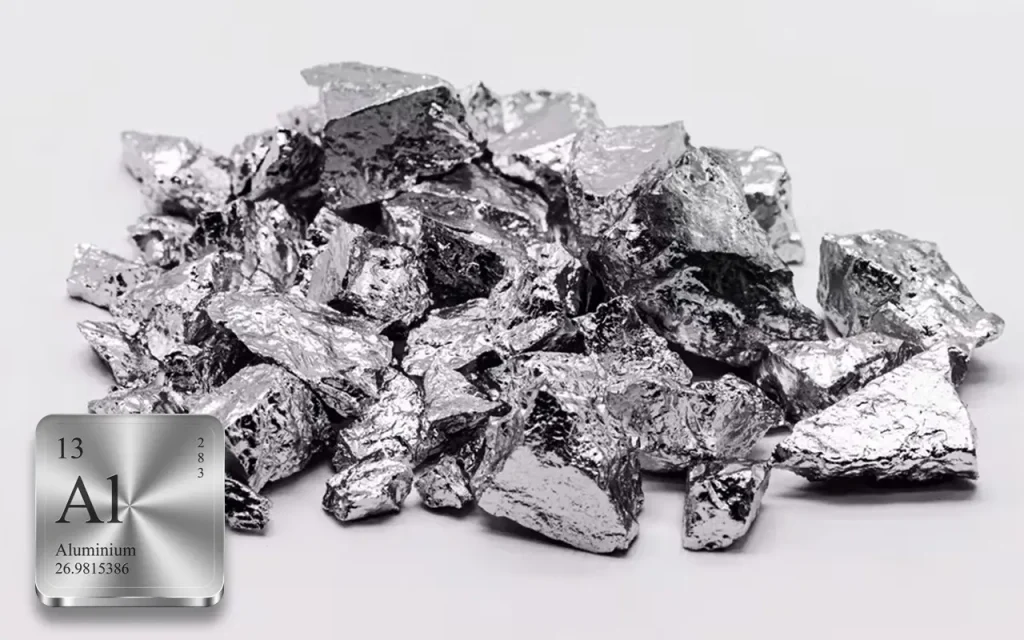
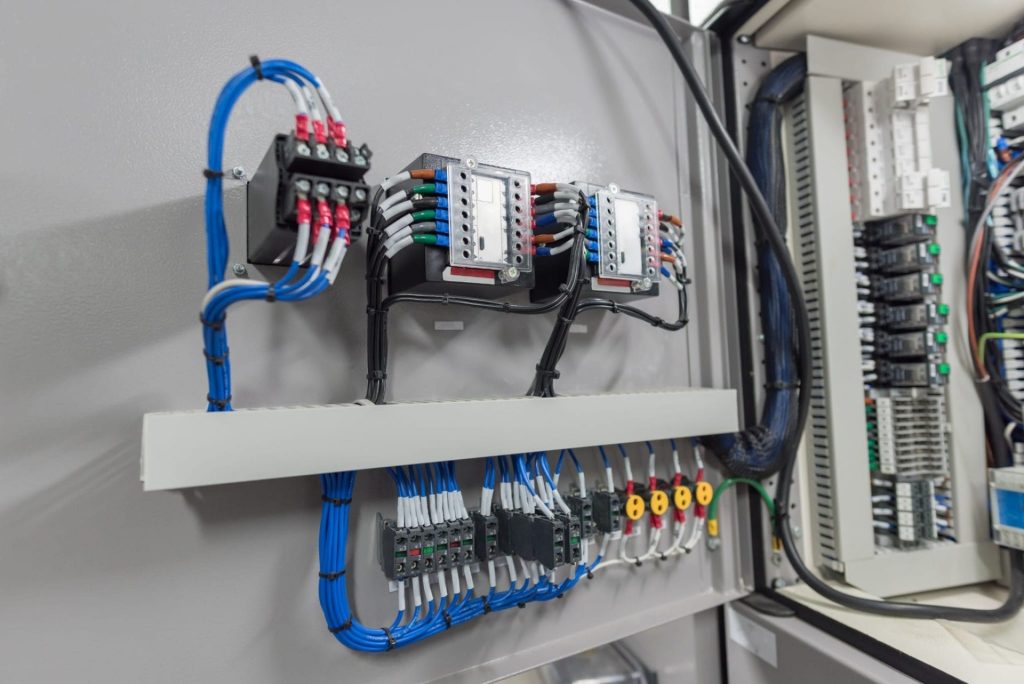
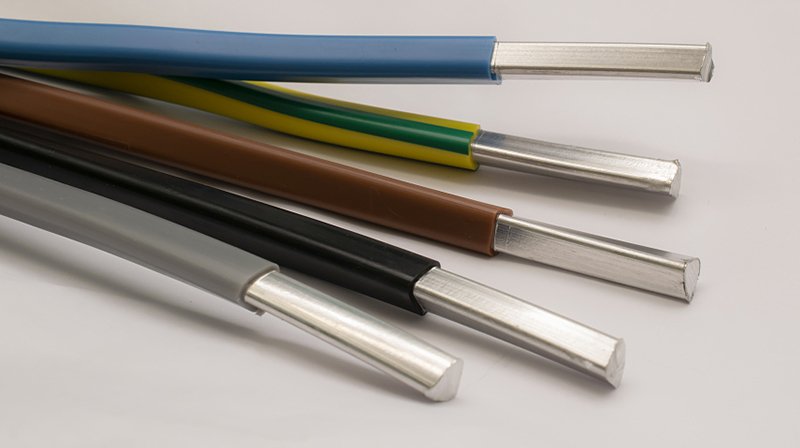
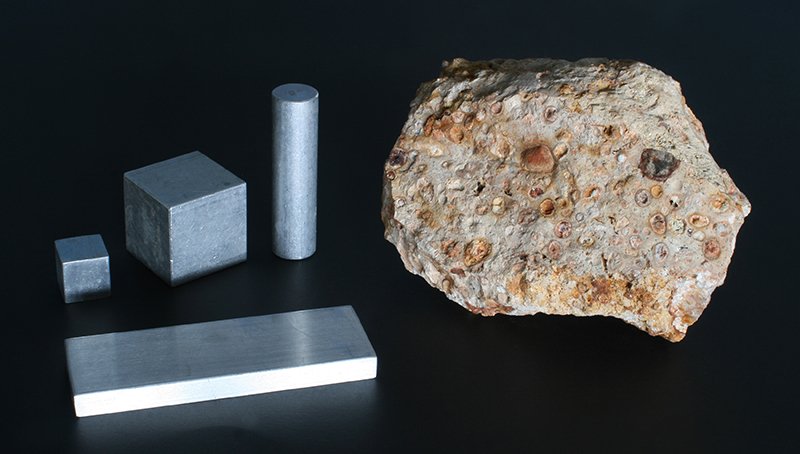


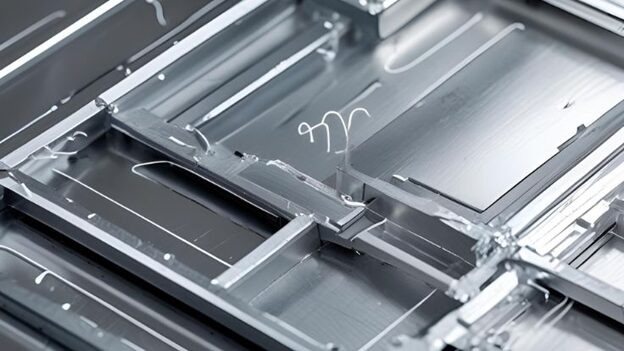

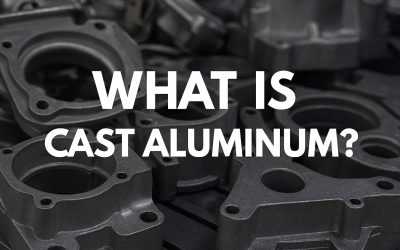
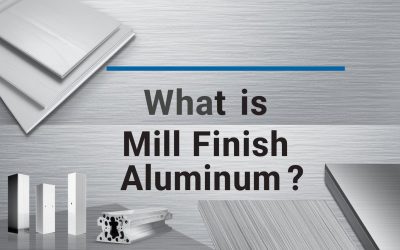
0 reacties